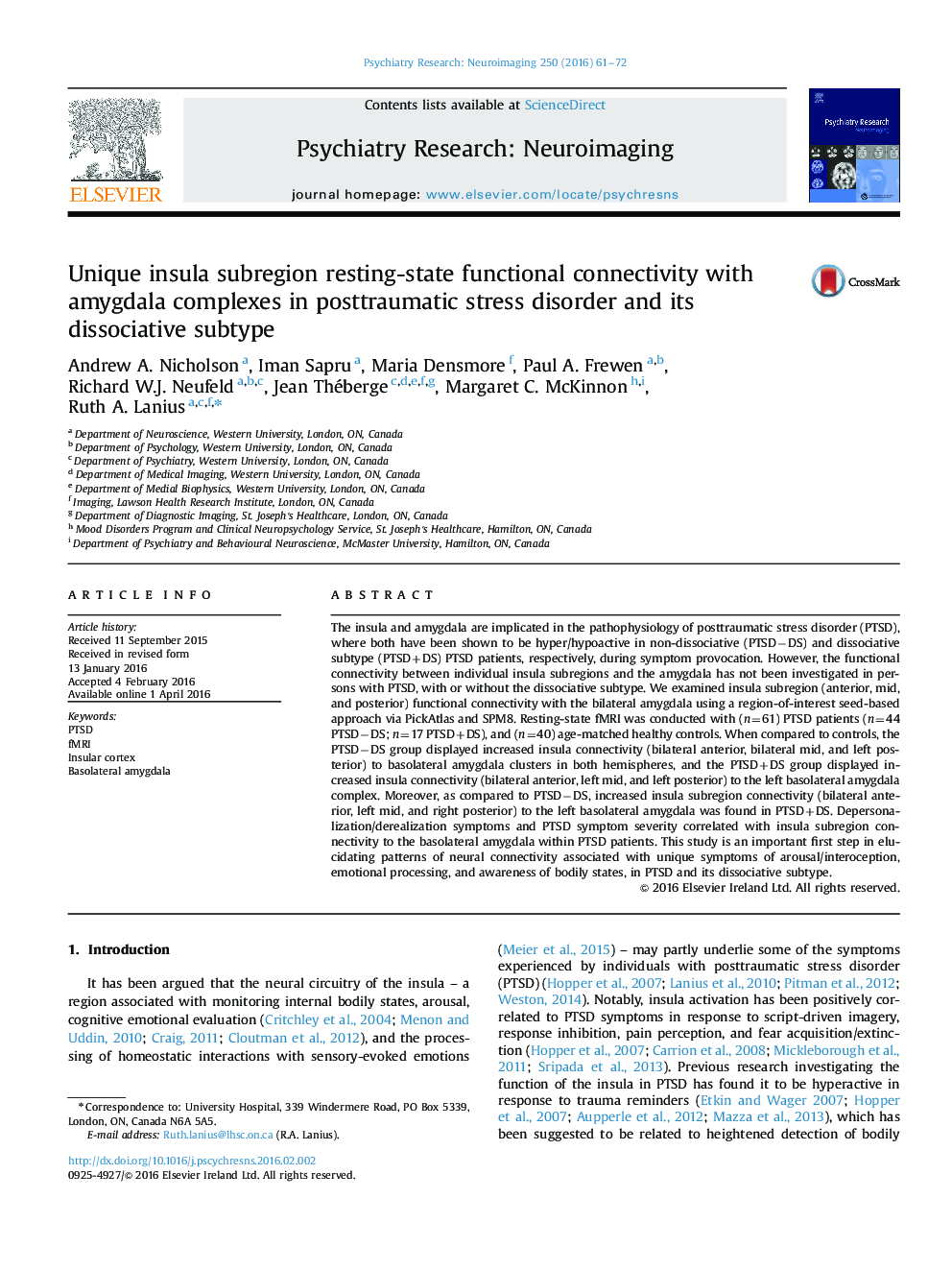| Article ID | Journal | Published Year | Pages | File Type |
|---|---|---|---|---|
| 334410 | Psychiatry Research: Neuroimaging | 2016 | 12 Pages |
•Increased insula connectivity to the amygdala within both groups of PTSD patients.•Differential insula connectivity to the amygdala among dissociative subtype patients.•Suggests unique neural circuit biomarkers of PTSD and its dissociative subtype.•Insula connectivity results parallel the unique symptom profiles of each PTSD group.
The insula and amygdala are implicated in the pathophysiology of posttraumatic stress disorder (PTSD), where both have been shown to be hyper/hypoactive in non-dissociative (PTSD−DS) and dissociative subtype (PTSD+DS) PTSD patients, respectively, during symptom provocation. However, the functional connectivity between individual insula subregions and the amygdala has not been investigated in persons with PTSD, with or without the dissociative subtype. We examined insula subregion (anterior, mid, and posterior) functional connectivity with the bilateral amygdala using a region-of-interest seed-based approach via PickAtlas and SPM8. Resting-state fMRI was conducted with (n=61) PTSD patients (n=44 PTSD−DS; n=17 PTSD+DS), and (n=40) age-matched healthy controls. When compared to controls, the PTSD−DS group displayed increased insula connectivity (bilateral anterior, bilateral mid, and left posterior) to basolateral amygdala clusters in both hemispheres, and the PTSD+DS group displayed increased insula connectivity (bilateral anterior, left mid, and left posterior) to the left basolateral amygdala complex. Moreover, as compared to PTSD−DS, increased insula subregion connectivity (bilateral anterior, left mid, and right posterior) to the left basolateral amygdala was found in PTSD+DS. Depersonalization/derealization symptoms and PTSD symptom severity correlated with insula subregion connectivity to the basolateral amygdala within PTSD patients. This study is an important first step in elucidating patterns of neural connectivity associated with unique symptoms of arousal/interoception, emotional processing, and awareness of bodily states, in PTSD and its dissociative subtype.
